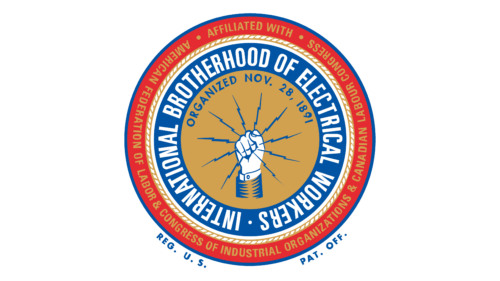The International Brotherhood of Electrical Workers (IBEW) is a labor union established by Henry Miller in St. Louis, Missouri. It was created to support and protect the interests and rights of electrical workers. The IBEW represents workers in various sectors including utilities, construction, telecommunications, broadcasting, manufacturing, railroads, and government. Its primary focus is on promoting fair wages, safe working conditions, and providing training for its members in the electrical industry.
Meaning and history
The International Brotherhood of Electrical Workers (IBEW) has a rich history dating back to the late 19th century. In 1891, Henry Miller, alongside ten delegates, founded IBEW in St. Louis, recognizing the need for a collective voice for electrical workers amidst the rapid industrialization. Initially named the National Brotherhood of Electrical Workers, it gained international status by 1899, reflecting its expanding influence. IBEW’s journey has been marked by advocacy for workers’ rights, safety standards, and fair labor practices in the electrical industry.
Over the decades, it has played a pivotal role in shaping labor policies, growing to represent a diverse range of professionals in sectors like utilities, construction, and telecommunications. IBEW’s commitment to education and training has also been a cornerstone, ensuring its members keep pace with technological advancements.
This union’s evolution mirrors the broader labor movement’s struggles and triumphs in advocating for worker’s rights in North America.
What is IBEW?
The International Brotherhood of Electrical Workers (IBEW) stands as a pivotal union in the electrical industry, formed in 1891 to champion the rights and welfare of electrical workers. It unites a diverse workforce, from electricians to broadcast technicians, advocating for fair working conditions, higher safety standards, and continuous skill development in the rapidly evolving field of electrical work.
1891 – 1953
The logo depicts an encircled emblem with a clenched fist grasping a bolt of lightning, symbolizing the power and unity of electrical workers. Text encircles the design declaring “International Brotherhood Electrical Workers,” with the founding date “Nov. 28, 1891,” underscoring its historic roots. The use of stark black and white enhances the emblem’s boldness and clarity, echoing the organization’s strong identity.
1953 – 1971
This vibrant emblem infuses color into the previous design, with a radiant yellow backdrop behind the iconic clenched fist and lightning. The bold red outer circle proclaims affiliation with the American Federation of Labor, emphasizing a broader unity in labor representation. The continuity of the founding date, “Nov. 28, 1891,” links to its origins, while the expanded color palette signifies dynamism and energy, reflective of the electrical trade’s essence.
1971 – 1999
Transitioning from its colorful predecessor, this logo adopts a more subdued palette with a golden-brown backdrop for the fist and rays. The red rim now includes a reference to the “Canadian Federation of Labour,” acknowledging the union’s international reach. An outer black ring has been introduced, adding a layer of solemnity to the design. The text “AFFILIATED WITH A.F.L.-C.I.O. & C.L.C.” denotes the union’s alliance with prominent labor federations, while “REG. U.S. PAT. OFF.” at the bottom signifies its registered status, enhancing the emblem’s formality and official standing.
1999 – Today
In this iteration, the logo’s central fist and radiating beams return to a stark blue and white, against a golden backdrop, conveying clarity and focus. The surrounding red band, now brighter, continues to declare the union’s affiliations with prominent labor federations, while the blue outer ring adds a crisp contrast. The text remains, affirming the logo’s message of solidarity and registered recognition. The color shift to a more vivid palette symbolizes a modernized energy and commitment to the union’s principles.












